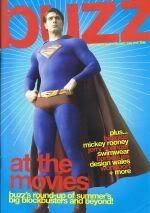Hide and Seek (2005)
Multiple personality disorder – or “dissociative identity disorder” as it’s been recently renamed – is a scary condition. It’s characterised by the appearance of several different personalities inhabiting one person, combined with a tendency for the sufferer to detach from reality. It’s surrounded by controversy, too, as to whether the symptoms are genuine or not. It manifests primarily in children from abusive families, and is more common in females than males; the core personality is often timid and depressed, and one or more of the alternate personalities is almost always a substance abuser.
It’s a scary disorder for the person suffering from it, who may suffer from “blackouts” or periods of amnesia covering the time when another personality has been manifesting, or who may struggle to keep their multi-faceted persona under control. It’s scarier still for the people surrounding the sufferer. So, in light of that fact, a movie about a dissociative man who, following the death of his wife, takes his young daughter away to a country house far away from the world should be terrifying, right?
Well, wrong. M. Night Shyamalan has a lot to answer for. Hide and Seek is that movie, but it’s also decidedly not that movie. David Calloway (Robert De Niro) is a recently widowed psychiatrist. Worried about the mental health of his young daughter, Emily (Dakota Fanning), he removes them both to a remote house in the country where they can recuperate. (Movies would have us believe this is what Americans do whenever anything bad happens, because relocating to somewhere no-one knows you and your old house is full of dark corners is clearly the way to put the sunshine back in your life.) Emily is withdrawn to begin with, but then develops an imaginary friend called Charlie. The friendship initially seems innocent, but takes on increasingly sinister overtones as Emily apparently mutilates a potential friend’s doll, murders her cat, and then moves onto her father’s new girlfriend.
The list of suspects for these crimes is growing, however: there’s the creepy caretaker, the creepy sheriff who drops by far too often for comfort, and the creepy couple next door that recently lost their daughter. The husband, in particular, seems to be taking an unhealthy interest in Emily, who, in her turn, tends to play up to the attentions of these older men. There’s also some kind of implication that something supernatural might be at work here; long, drawn out shots of De Niro framed against an apparently empty background, or windows and doors appearing to move all by themselves, as well as the overabundance of mirrors in the house kept me on the lookout for monsters lurking in the shadows, though they sadly never emerged. Eventually, however, the David-is-Charlie “twist” is revealed – apparently the studios sent out final reel of the movie, individually numbered, separately from the rest of the movie in order to protect the ending, even though anyone who’s seen The Shining or The Sixth Sense can smell it coming a mile off – and then a painfully protracted ending follows.
To give Polson his due, he did deliver a couple of impressive deaths towards the end, along with several nods to his predecessors in the genre. The problem is that this movie really isn’t anything new; the prolonged ending is probably symptomatic of too much money rather than any artistic merit. The movie as a whole suffers from its overblown budget: it’s a paint-by-numbers horror that relies heavily on cheap scares. Creepy noises that turn out to be the cat just aren’t impressive any more, and neither are jumps induced solely by loud noises. The target audience is clearly the young-teen market; the cinema tonight was packed, and, at 21, I felt ancient. Even they weren’t prepared to be scared by the movie, though: on the odd occasion something raised a shriek from a member of the audience, the rest of the cinema laughed heartily, and rightfully so. I fear for the next generation, however, if this is how they choose to spend their Friday evenings.
Potentially, some deeper psychological meanings could be extrapolated from this movie: for example, David’s tendency to kill women in water, or at least create the appearance of a watery grave, must be indicative of something; the doll parts floating in the water in the cave at the end seemed to be desperately trying to represent something that never emerged. The credits at the very beginning signalled this rather disappointing tendency: as names appeared onscreen, a childish scrawl copied the names, or titles, or sometimes just picked out some letters at random: cat, red, man. The signifiers are there, they just don't signify anything more than yet another thoughtless horror cashing in on the cute-yet-incredibly-scary child phenomenon. There’s nothing here to give you the creeping horrors late at night.
IMDB link










No comments:
Post a Comment